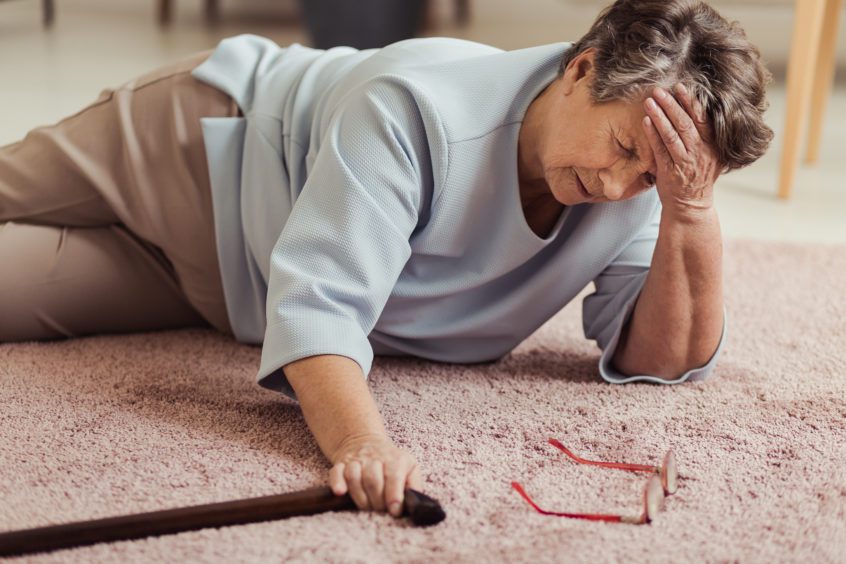Preventing Falls While at Home
According to the Centers for Disease Control, approximately 60% of falls in adults over age 65 occur at home and most don’t happen from a height, say a ladder or the stairs. Most happen at ground level. While there are many causes for falls, dizziness and balance problems are more common as adults age.
In addition, the American Speech-Language-Hearing Association, reports that older people with hearing loss have three times the risk of an accidental fall, and disorders of the ear, such as benign paroxysmal positional vertigo that affect balance, also increase the chances of a fall.
For older adults with hearing loss or those with dizziness and balance disorders, home safety is important for prevention. Here are some home safety tips from the Vestibular Disorders Association to help reduce the risk of falls at home.
3-Zone Home Safety Assessment
Do a home survey, walking around the outside and inside of your home looking in three different zones.
ZONE 1: EYE LEVEL
Head and eyes: optimal vision depends on good lighting and minimizing head movements.
ZONE 2: HANDS AND SEAT LEVEL
Arms and hips: need to be able to grab onto, or sit down on a moment’s notice.
ZONE 3: GROUND LEVEL
Legs and feet: need firm, level surfaces, free of obstacles or unexpected changes.
Walk around your home three times, making notes as you go. Each time you should focus on a particular zone. Be sure to include not only the inside of your home but the outside area as well, including all doors, gates, and steps to enter or exit the home.
The first time, walk around looking at everything in Zone 1, eye level and above. Can you see enough to walk around during the daytime and at night? Could you see if the power went out? Is everything overhead within reach without needing to climb?
Walking around for Zone 2 requires that you walk and stop every 5-7 feet. Each time you stop, think about what would happen if you a) got dizzy and started to fall, or b) needed to sit down. Is there something close by to grab onto or a chair (without wheels) if you needed to quickly sit down?
During the third walk around your home, focus on Zone 3. Do you have a clear path in every room? Are there newspapers, throw rugs, or other items on the floor? Although rugs may be decorative, they can be a trip hazard. Firm, stable surfaces are best for balance. If you prefer carpet, then wall-to-wall carpeting is best, with a low pile and minimal to no padding. A thick padding underneath your carpet can make you feel particularly unsteady when your body is not able to feel connected to the floor. Outside, make sure you have a level walking path (wide enough for walking with a cane or walker) through the grass or garden area. Minimize the grade of sloping surfaces or add a handrail.
Fall Prevention Measures to Implement at Home
- Wear nonskid shoes that are secure on your feet.
- Make sure your clothing fits well so it won’t catch on something or trip you.
- Get regular exercise to maintain strength and flexibility.
- Have your vision checked every two years and maintain a current glasses prescription.
- Maintain healthy blood pressure.
- Pay attention to new medications and possible side effects or drug-drug interactions that can cause dizziness.
- Limit alcohol to two drinks or less per day.
Making changes in your home may be difficult, but don’t make excuses. If you are off balance, nothing is more important than keeping your home safe to prevent falls.
- Install grab bars.
- Add a ramp or handrails.
- Get a cane or walker.
- Consider a bedside commode or shower chair.
- Visit your doctor or audiologist to discuss balance concerns.
Danielle Dorner, Au.D., is a vestibular audiologist with Associated Audiologists who specializes in diagnosing and treating dizziness and balance disorders. She uses state-of-the-art technology to evaluate individuals suffering from dizziness, balance problems, and/or who have a history of falls related to inner-ear disorders.
For more information about dizziness and balance disorders, download our free e-book, What to Know about Dizziness and Imbalance or schedule an appointment with Dr. Dorner.



